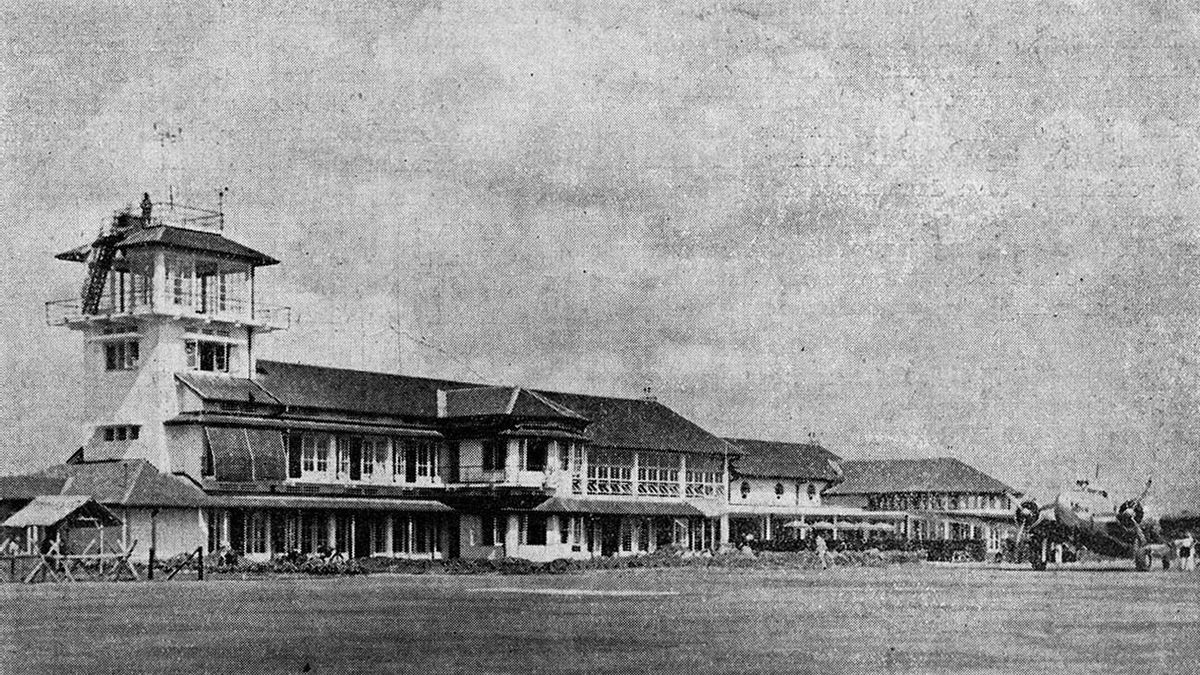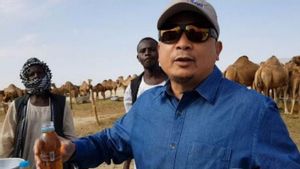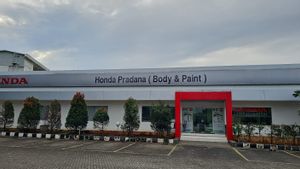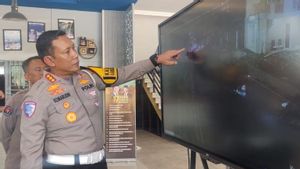JAKARTA - It is possible that currently people only know the Kemayoran area, which is only limited to the area which includes three urban villages, namely Kemayoran, Kebon Kosong, and Serdang in Central Jakarta.
In fact, Kemayoran used to be a famous village because great people had lived there. Some of them include the name Murtado, a Betawi champion, nicknamed the Kemayoran Tiger, to the Betawi acting legend, Benyamin Sueb.
Their fame also made Kemayoran an important village in Jakarta's civilization. But whether you can believe it or not, apart from the Betawi people themselves, the Kemayoran area was actually owned by a wealthy landlord in Batavia, whose full name is Isaac de l'Ostale de Saint Martin.
As revealed by Rachmat Ruchiat in the book The Origin of Place Names in Jakarta (2018), the name Kemayoran is closely related to a major who owned a lot of land in Batavia.
"The land is scattered in several places, including on the east bank of the Bekasi River, in Cinere (formerly known as Ci Kanyere) east of the Krukut River in Tegal Angus and in the Ancol area. The total area is thousands of hectares, ”he said, as quoted by VOI.
According to existing literacy, the major was born in 1629 in Oleron, Bearn, France. However, the exact reason why he chose to leave his homeland and dedicate himself to the Dutch VOC trading partnership in Batavia is not known. Because of his hard work while serving the Company, in 1662 he had become a lieutenant and took part in the battles in Cochin.
Along the way, Isaac de Saint Martin was promoted to major. Moreover, at that time he was frequently involved in many wars, including in Central Java. The rest, he helped Mataram in dealing with Prince Trunojoyo. Not only that, in March 1682 he and Captain Tack were assigned to help Sultan Haji face his father, Sultan Ageng Tirtayasa.
"The rank of major is given by the Dutch government to wealthy Dutch, European and Chinese people. Because, they work to collect taxes from the people. The measure of wealth at that time (was) the amount of land control, ”wrote an article in Tempo Magazine entitled Ondel-Ondel on the Terrace Wall (2006).
"That's why they are usually called landlords. A major can monopolize trade and live in a big house with acres of yard, which in Dutch is often called a landhuis, ”he continued.
In order to protect his interests, the major often uses the services of a hit man, tukung or jago –jawara – to perpetuate his existence in collecting taxes. Not only that, the owner of the rank also had dozens of slaves with the task of serving him in a landhuis called Gedung Tinggi. Unfortunately, the residence is now gone.
After that, he spent a lot of time at his house on Jalan Garuda, right near the Kemayoran Gempol corner. Then, because of the wealth and size of the major's house, people who visit the area often call the area Mayoran as stated in the Plakaatboek document (Van der Chijs XIV; 532). Long story short, Mayoran is slowly being completely pronounced as Kemayoran.
EvictionIn the past, Kemayoran village, which has an area of 500 hectares, was the home of the original Betawi people who worked as farmers. For this reason, in general, in Kemayoran there are many fields and rice fields where food is produced. The place is also used by children to play everyday.
Not only Betawi residents, those who live in Kemayoran are also filled with people of Dutch descent who are commonly called 'sinyo'. Unfortunately, this condition did not last long. In 1938 a change occurred. The area that was once full of houses, rice fields and fields, was transformed into an airport by the Company.
This incident is what makes Betawi residents in Kemayoran many have diaspora everywhere. This is because the house and place where they earned a fortune had been evicted by the colonial government. Uniquely, there is no commotion like what usually happens lately in any land acquisition issue.
Investigate the cause of the non-commotion, partly because most of the 450 hectares of land were owned by a landlord named Rekeendal. The rest, the land belonging to the freed residents was replaced with land in another location by the colonial government.
Kemayoran international airportThe comic Tintin in the episode "Flight 714" includes Kemayoran Airport as the background story, you know! #NationalFlight Day pic.twitter.com/5sRA2Swj9O
- KOMPAS TV (@KompasTV) April 8, 2015
Several years later, Jakarta's proud international airport was inaugurated by the colonial government on July 8, 1940. At that time, the acting manager was the Koninklike Nederlands Indische Luchtvaart Maatschappy (KNILM).
It is recorded that the first aircraft to land was a DC-3 belonging to KNILM which flew from Tjililitan airfield, now Halim Perdanakusuma, on July 6, 1940. The next day, July 7, 1940, DC 3 aircraft with flight number PK-AJW departed from Kemayoran for Australia.
Since then, Kemayoran airfield has become famous around the world as a favorite stopover while waiting to fly to Sydney, Australia. Due to its popularity, Belgian comic artist George Rami, who has the pen name Herge, made this airport the setting for his comic scene, The Adventure of Tintin: Flight 714 to Sydney (1968).
"Blistering barnacles! Djakarta! Djakartal DJAKARTAI! Can't you listen to what I say ?," That was the sentence uttered in the comic Herge created when he arrived in Kemayoran.
Not only Herge, residents on the outskirts of Kemayoran were also amazed by the sight of the planes moving back and forth to land and take off. No matter young or old, from children, teenagers, to adults, they often entertain themselves by watching airplanes. When an airplane starts flying, they scream while looking at the sky and say: Airplane, ask for money? .. Airplane, ask for money? .. Airplane, ask for money?
The English, Chinese, Japanese, Arabic, and French versions are automatically generated by the AI. So there may still be inaccuracies in translating, please always see Indonesian as our main language. (system supported by DigitalSiber.id)










